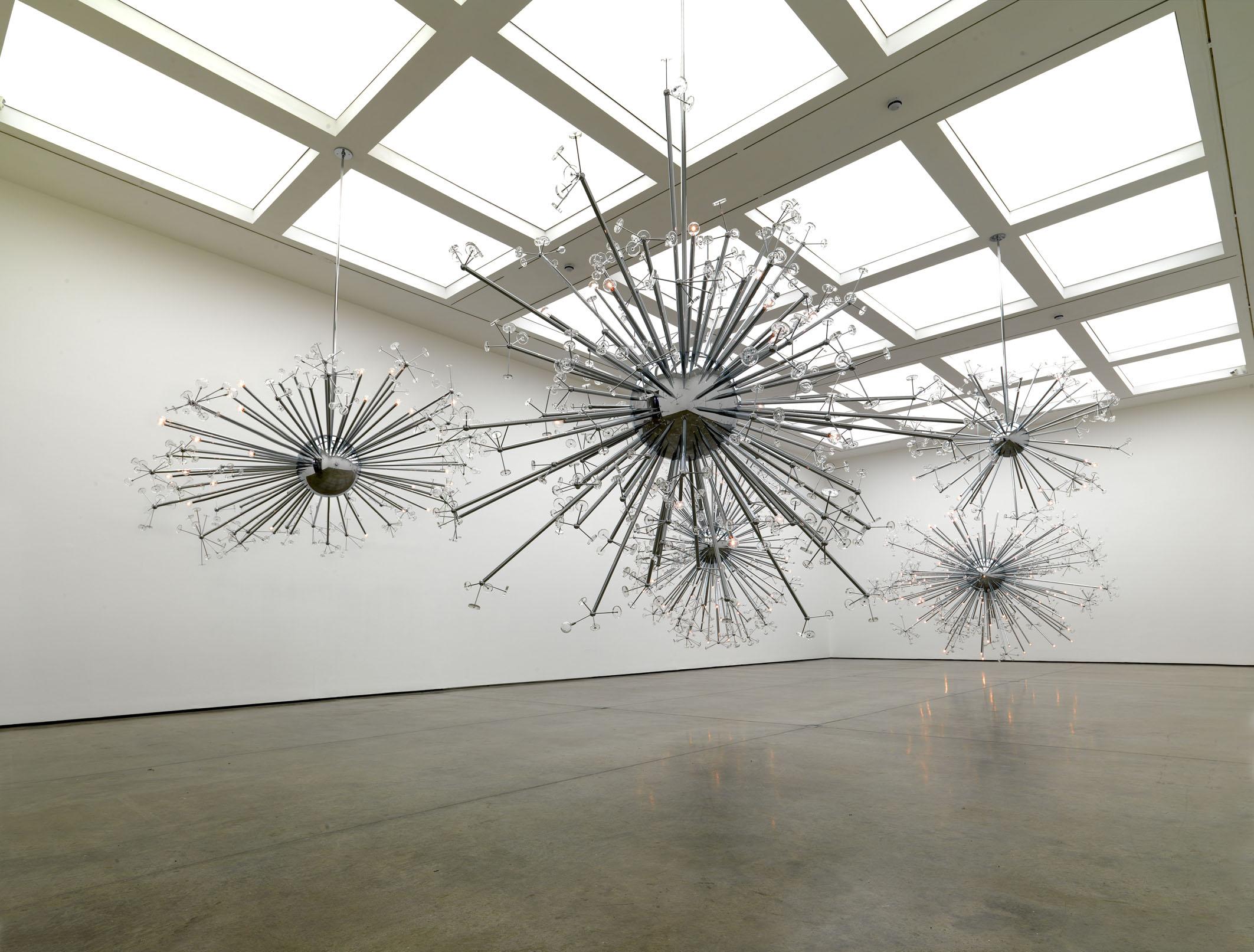Recently, the Cantor Arts Center introduced a number of new exhibitions, including “STRAY,” “The Medium Is the Message” and “Island Universe.” Late last quarter, I had the privilege of touring these new exhibitions.
I stepped into a nearly empty room with white walls and beige hardwood floors. The wall to my left housed a grand piece comprised of framed black-and-white photos of letters formed with cinder blocks. To my right were white canvases with bold black letters. At the far wall were two vinyl records that could be listened to with small black headphones hanging nearby. This was “STRAY: A GRAPHIC TONE,” one of Cantor’s newest exhibitions. “STRAY” features the works of Shannon Ebner, an artist and author examining the nuances and limits of language, both visual and auditory, by deconstructing and displaying it in unconventional ways.
According to Cantor’s website, “STRAY” is “[c]omprised of audio recordings, photographs, and literary components … [that investigate] the ways in which objects and language can shift away from their intended uses, creating new meanings in the process.”
The grand piece to my left was the exhibition’s anchor piece: “A.L.N.G.U.E.*.F.X.P.S.R.” The cinder-block letters that made up the piece spelled out its name, though with more letters filled in. To me, this piece symbolized language’s ability to convey meaning even when it is broken or twisted. “A.L.N.G.U.E.*.F.X.P.S.R.” is a part of Ebner’s project “The Electric Comma Series” and is stylistically similar to Ebner’s namesake poem “The Electric Comma,” which considers the movement in photography from analog to digital. A thick stack of posters of the poem were on the floor in one corner of the room, free for museum-goers to take. As I watched a passerby pick one up, I thought about the ease with which language disseminates, and how once we say something, it is impossible to take it back. There is no telling what people will do with our words.
The room flowed seamlessly into another of Cantor’s new exhibitions, “The Medium Is the Message: Art Since 1950,” which was inspired by a Marshall McLuhan quote: “It is the medium that shapes and controls the scale and form of human association and action.” The exhibition “explore[s] the notion of ‘medium’ in its various contexts” and is divided into three broad categories titled “In the Abstract,” “The Sum of Its Parts” and “The Faces We Present.” The first thing I was greeted with was a larger-than-life sculpture that looked like a blocky, metallic astronaut with three lengthy plumes sprouting from its head. This was one of Nick Cave’s “Soundsuits,” which “conceal[ed] the wearer’s body — obscuring any indication of race, gender, or class.” Upon closer inspection, I observed that it was made of countless shiny buttons that glinted sharply in the white museum light. Perhaps this “Soundsuit,” with its mirror-like buttons, both masked the wearer’s identity and encouraged the observer to reflect upon their own.
The last of the new exhibitions was “Josiah McElheny: Island Universe.” I stepped into the vast gallery and was awestruck. Suspended throughout the room at various heights were five massive metallic explosions that resembled steel dandelion seeds frozen in time and space. At the ends of the steel rods emanating from the center of each explosion were small glass discs and orbs, some with light inside of them. I could see myself in the reflective central orb of each metallic explosion. In a way, we are each the center of our own universe, and every expansion of that universe is viewed through and shaped by our own personal lens.
McElheny’s exhibition is named after Immanuel Kant’s “island universes” theory, and gives a tangible form to the concept of “inflationary multiverse.” Walking through the exhibition made me feel small in a kind of comforting and serene way, almost as if I were a single particle that simply existed and floated insignificantly through a universe that was infinitely larger and more important than I was.
If you want to check out these new exhibitions, the Cantor Arts Center is free for everyone and open every day of the week (except Tuesdays, when they’re closed, and Thursdays, when they’re open until 8 p.m.) from 11 a.m. to 5 p.m. Additionally, Stanford students can attend Cantor’s “First Fridays,” when “on the First Friday of every month during the academic year, the Cantor is open late for art-making, music, and more.” It is free for anyone with an SUID.
Contact Dax Duong at daxduong ‘at’ stanford.edu.
